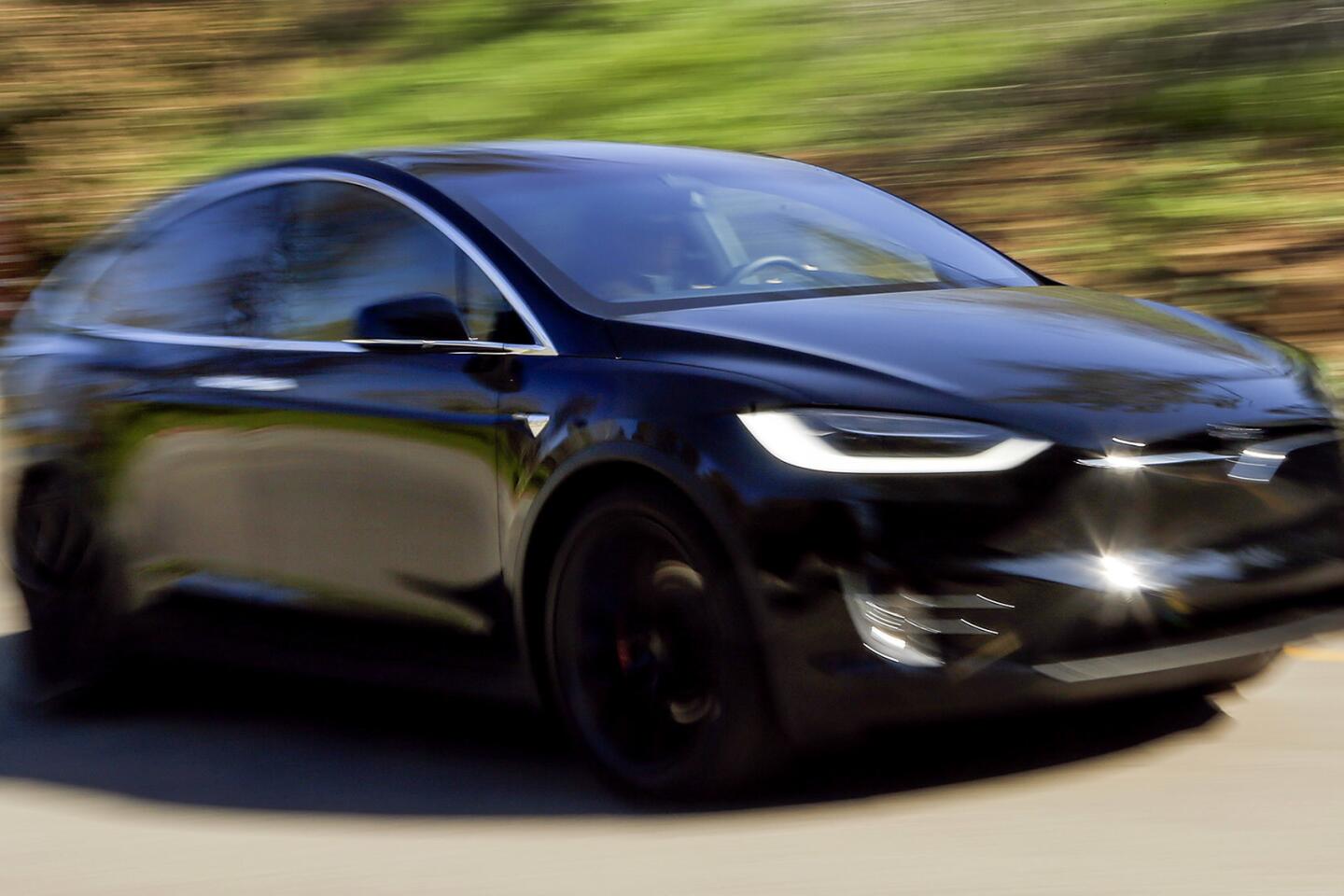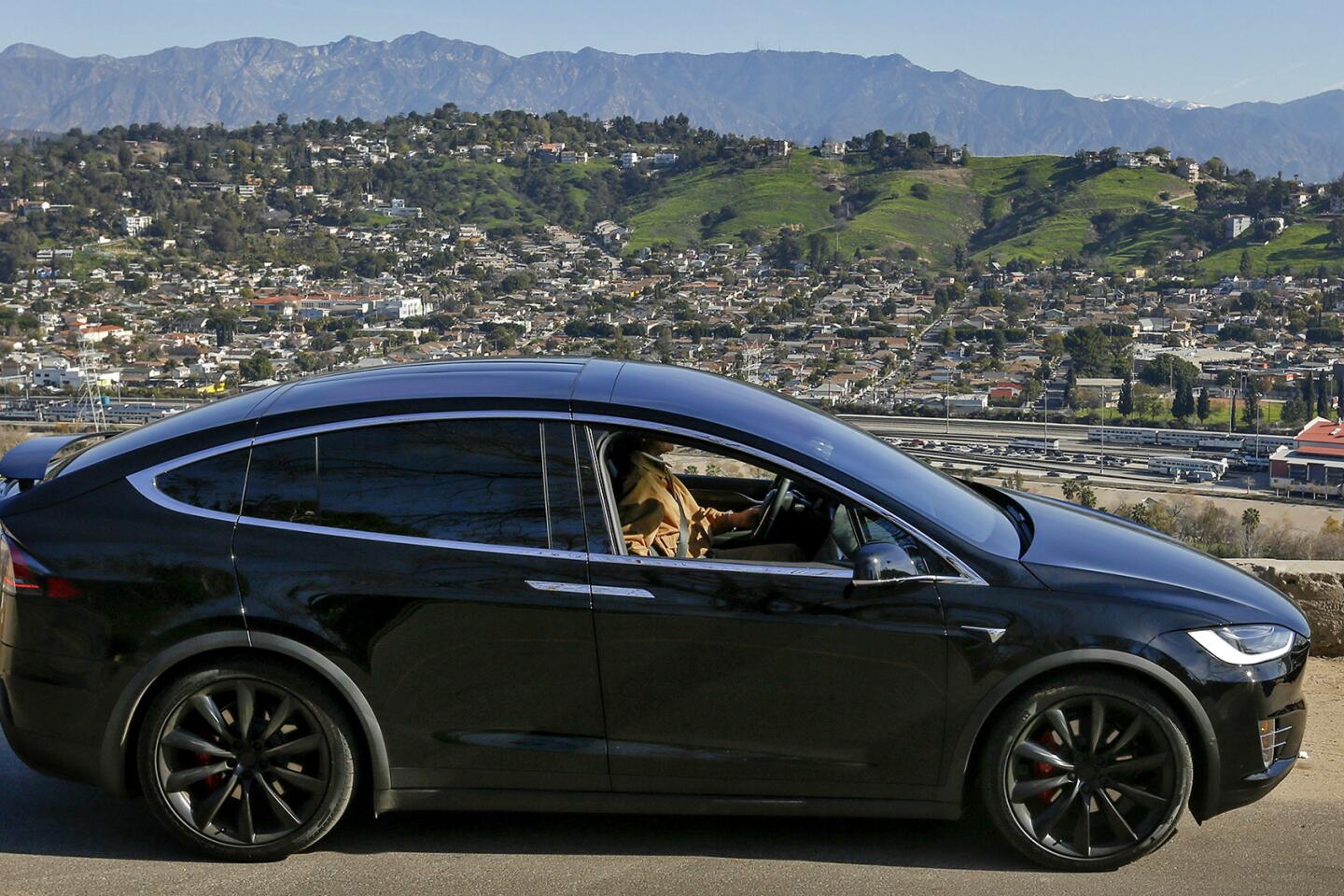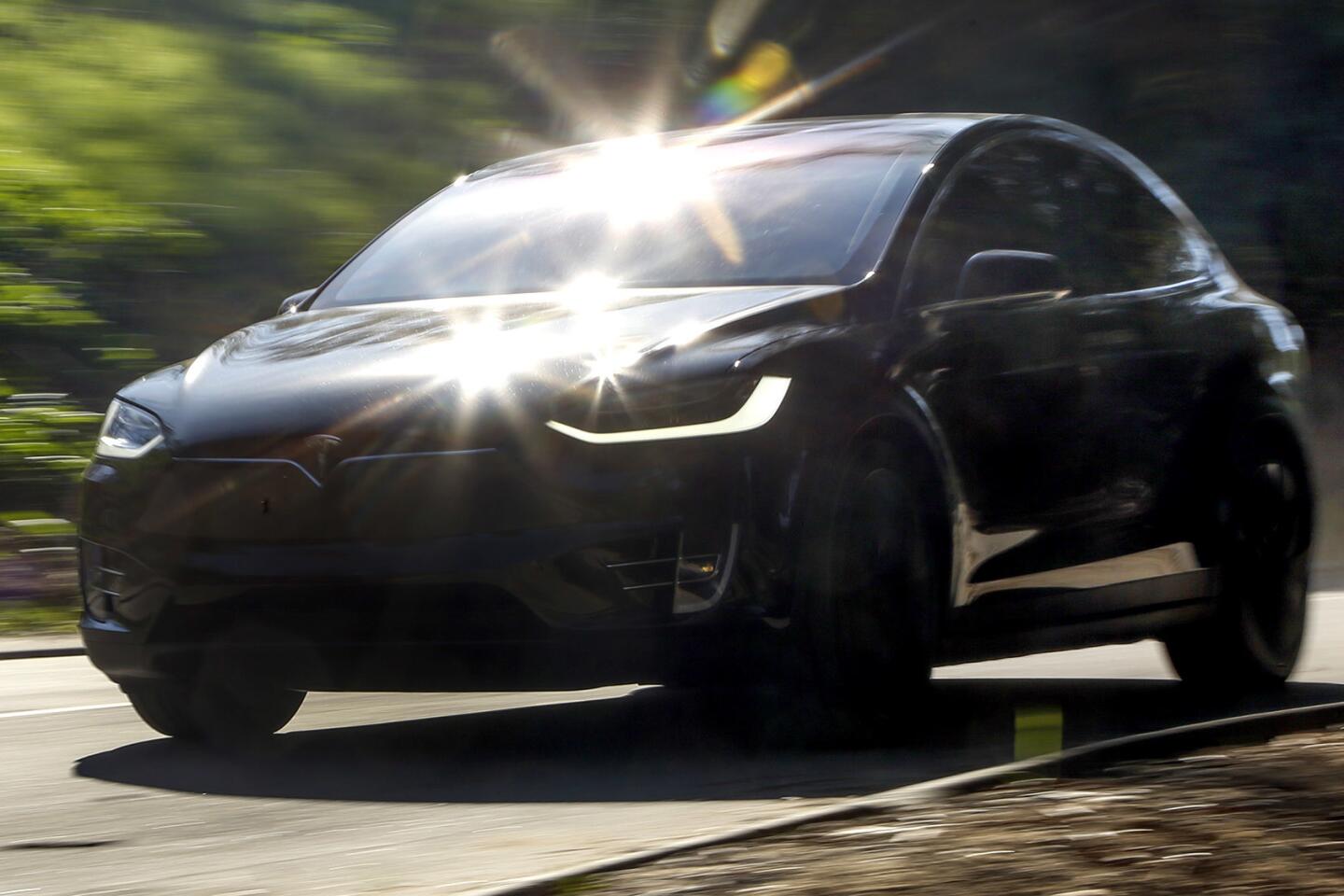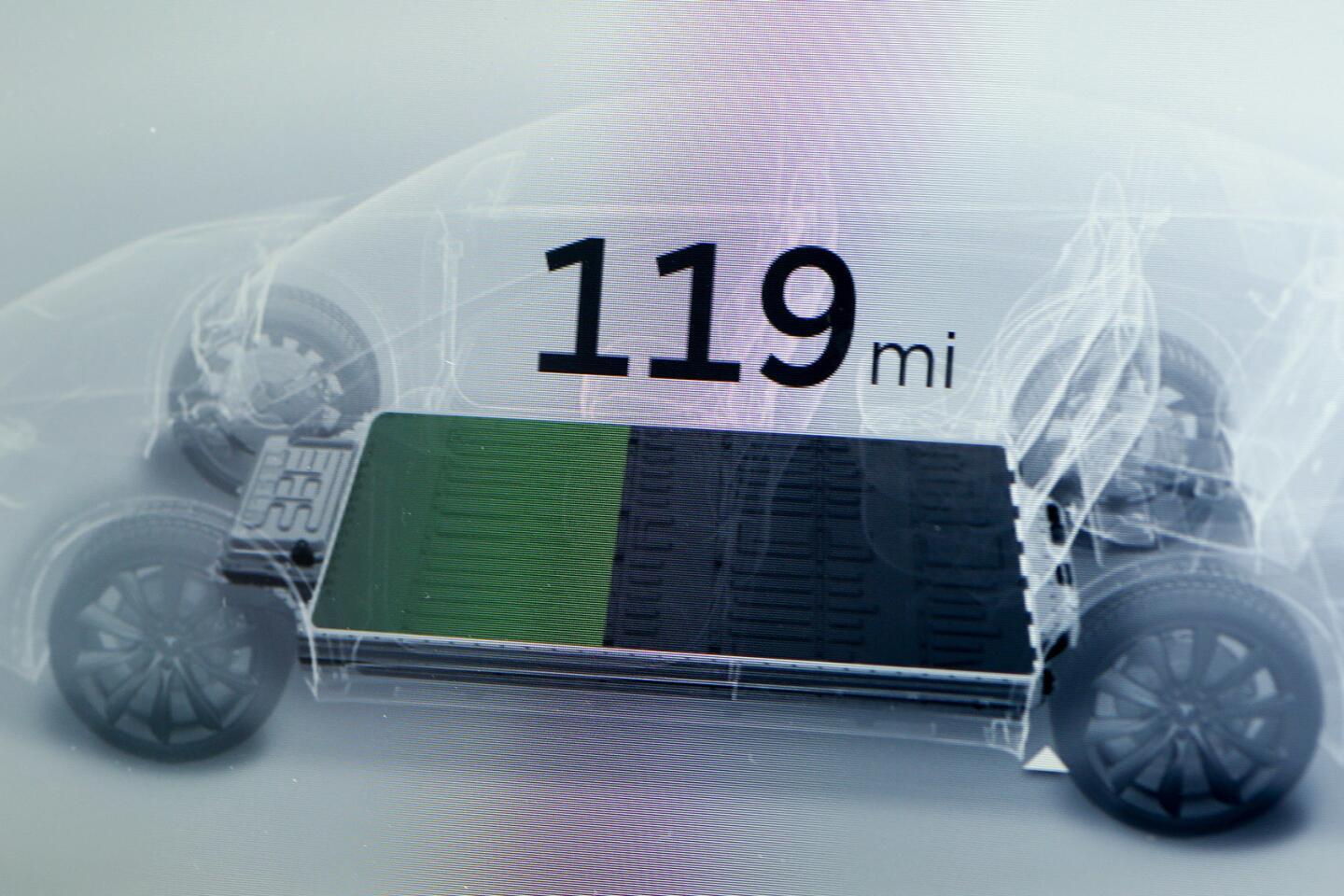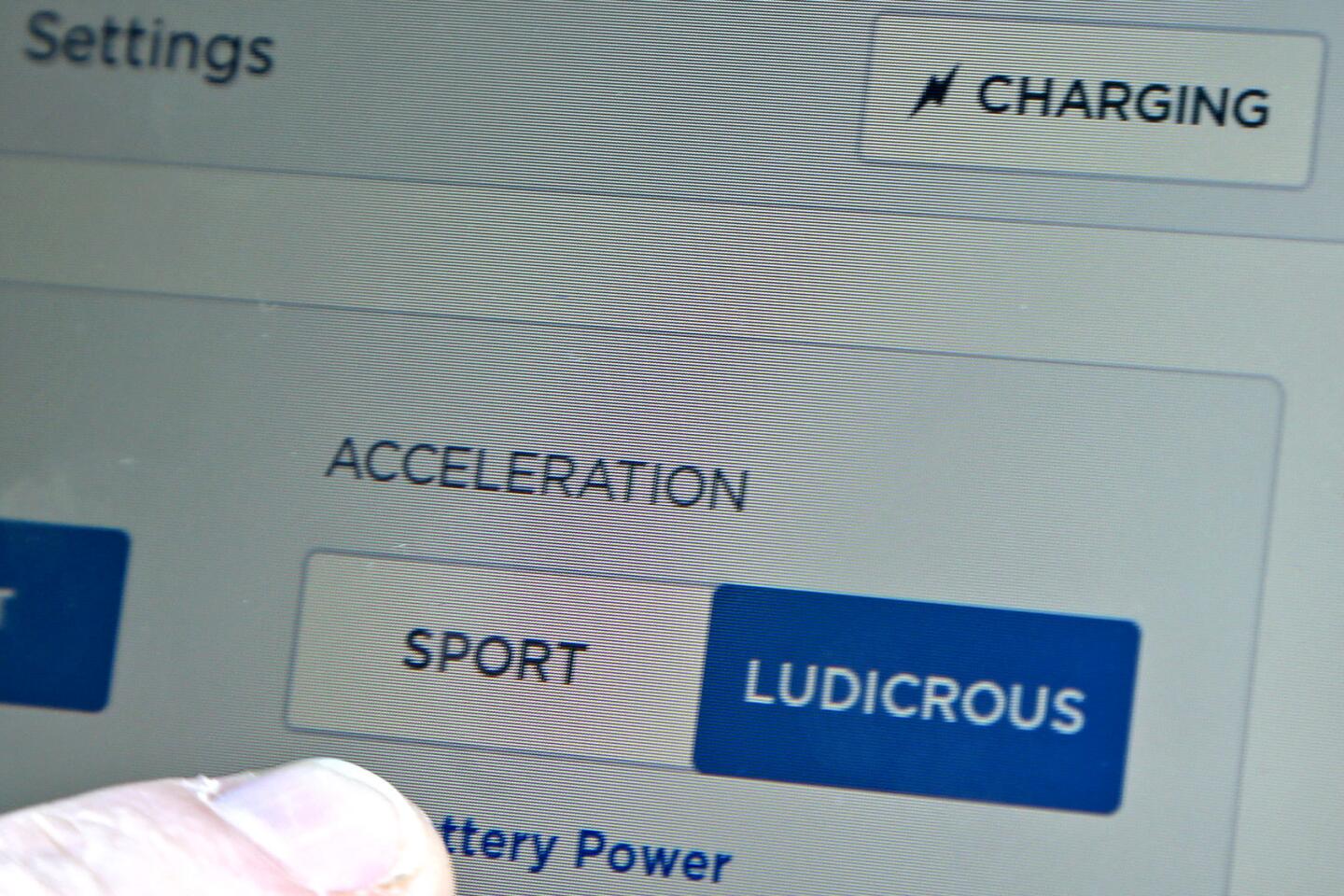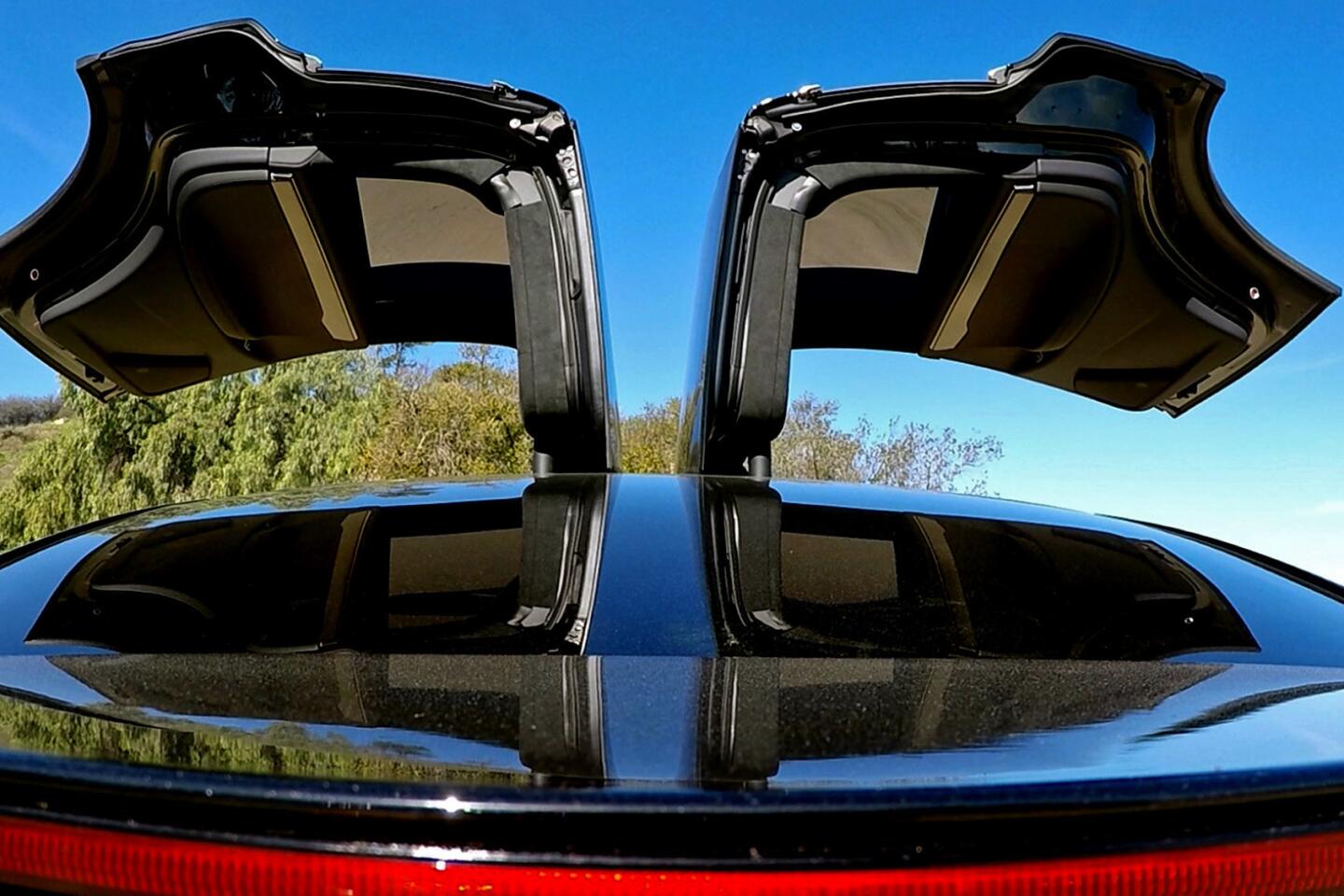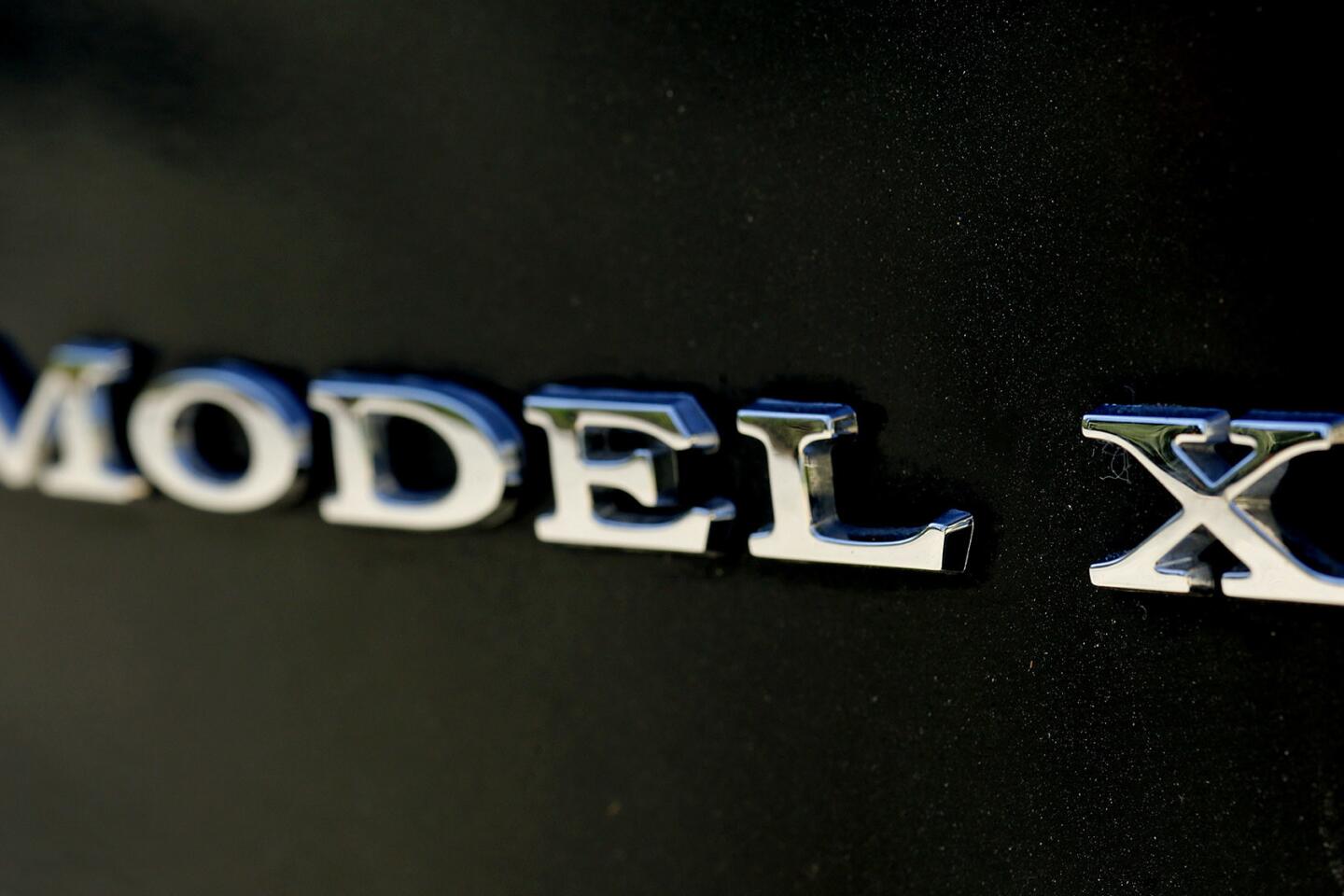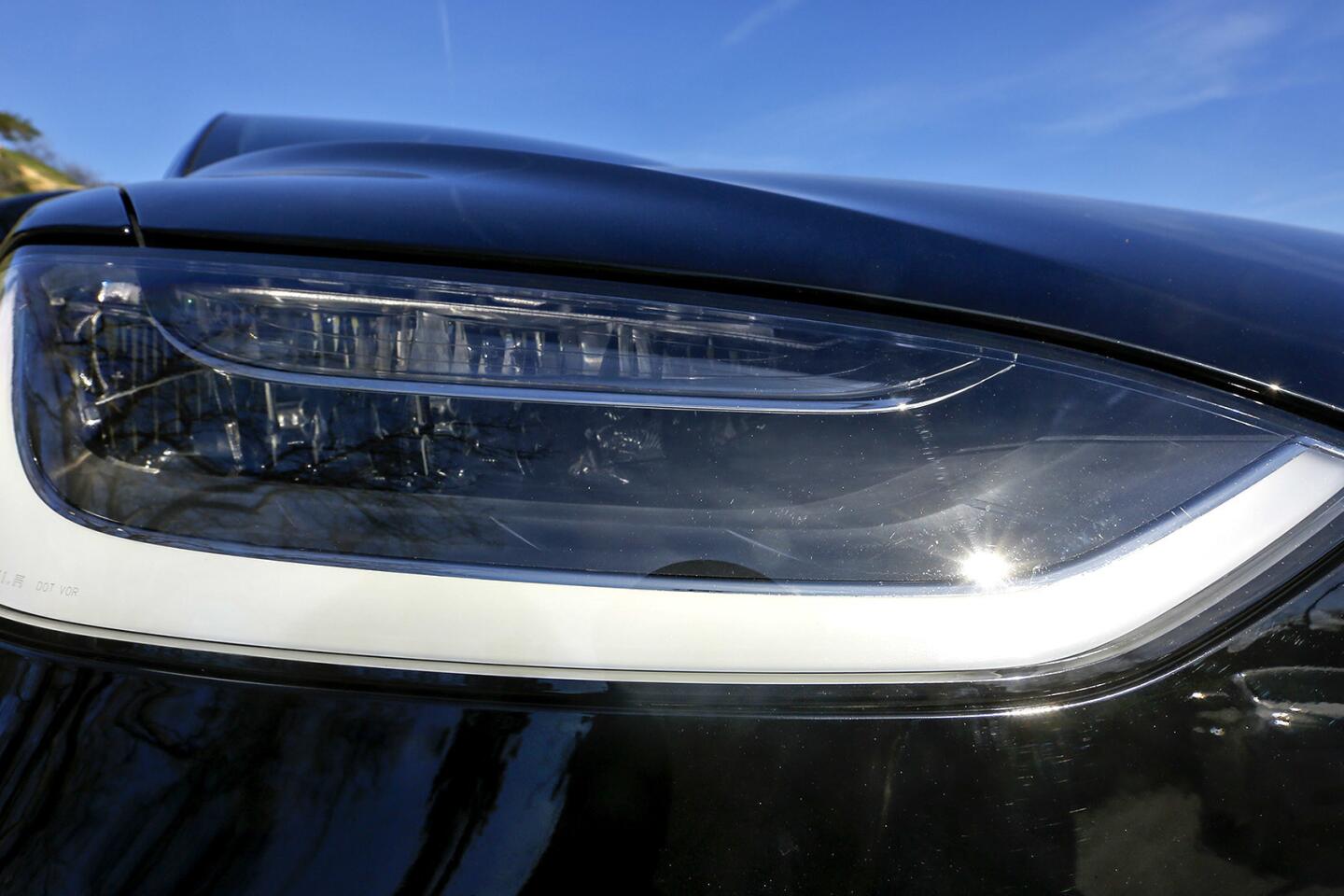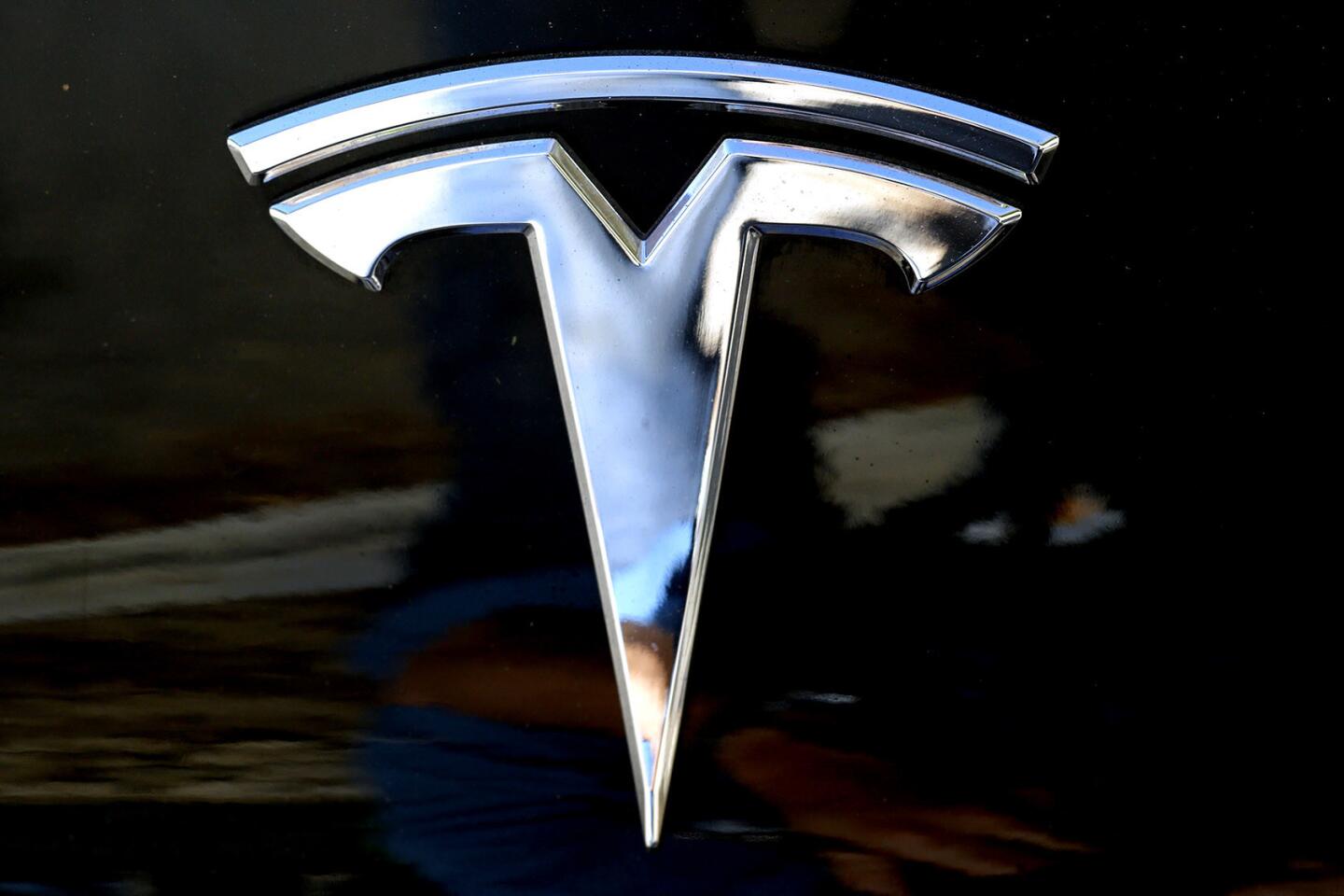Review: Teslaâs newest X is a crazy amazing SUV

Teslaâs newest and most expensive vehicle, the P100D Model X.
Teslaâs Model X P100D is the safest, quickest and most sophisticated SUV ever built.
Itâs equipped with an Autopilot system that allows the car to essentially drive itself â with a driver behind the wheel. It features an air-filtration system that will protect the occupants in the event of a bio-chemical attack. And itâs quick enough off the line â a claimed 2.9 seconds from zero to 60 mph â to match the fastest Ferrari and beat any four-door vehicle (except Teslaâs other battery electric rocket, the Model S P100D).
The P100D is the newest X in the Tesla family, an upgrade that replaces the discontinued P90D. As with the other cars in the all-electric Tesla line, the P indicates the vehicle is equipped with the high-performance, all-wheel-drive package. The D means it is equipped with dual motors, fore and aft, driving that power to all four wheels.
It is a remarkable vehicle. After several days in a P90D, and then several more in the P100D, I am certain this Tesla is the quickest car Iâve ever driven. At the same time, itâs one of the quietest, and one of the most comfortable, and the only one capable of getting me from LAX to Silver Lake without my once having to interrupt the Autopilot system to brake, accelerate or steer.
Tesla had delays and difficulties bringing the Model X to market. The âfalcon wingâ doors, especially, presented engineering problems so significant that company co-founder Elon Musk later said he wished he had gone with conventional doors.
But thereâs nothing conventional about the Model X.
The driverâs side door opens automatically when the driver approaches. The falcon wing doors rise and spread soundlessly, and gracefully, to reveal a sumptuous seating compartment.
These elegant doors can open in a very narrow space, making entry and exit from the rear seats simpler than from the front. If the parking space is too narrow even for that, Model Xs equipped with the âSummonâ feature actually will park themselves, as ordered from outside the vehicle by the driver, and then ease out of the parking space when itâs time to go.
The comfortable front bucket seats are matched by almost equally comfortable second-row bucket seats, and slightly less comfortable third-row ones. (Other configurations allow for a second-row bench seat, making seven passengers possible â as long as the two in the rearmost seats arenât very big.)
A panoramic windshield extends past the conventional roof line, opening the view to sky and stars.
A lush sound system, coupled with the general silence of the car, makes the X feel like a listening booth on wheels. And among the pre-loaded streaming music channels is âTesla Top 20,â allowing the really obsessive Model Xer to listen to the 20 songs most played by other Tesla owners.
On the road, the Model X feels solid, secure and grounded. Itâs a big car that sits high and wide but doesnât drive big. For an SUV, thanks in part to the flat, chassis-level battery that lowers the carâs center of gravity, it moves a lot more like a sports car than a light truck.
Thatâs especially true during acceleration. Like all electric vehicles, the Model X has enormous torque. All that massive battery power goes straight to the motors, without any intervening pistons, crankshafts, clutches or transmissions.
And when the âLudicrousâ driving mode is engaged, the acceleration is ⌠ludicrous. Zero to 60 in 2.9 seconds is quick in any vehicle. In the Model X, because it is so large, smooth, silent and vibration-free, it feels even more so â like experiencing a magic trick that must violate some law of thermodynamics.
The X stops well too. The models I borrowed were both fitted with 22-inch wheels and Tesla-branded red brake calipers. Stopping was nimble and effortless. The carâs regenerative braking system, tuneable through the massive dash screen, slowed the Model X while returning energy to the battery. Properly used, it will extend brake pad life dramatically.
The X factor in the X is, for some prospective buyers, the much-bruited âAutopilotâ system. (Other than the âLudicrousâ button, which is an upgrade from the âInsaneâ driving mode offered on the Model S Teslas, this is the feature I was asked about most while testing the two cars.) Though it still has not quite reached the fully autonomous stage, it is a remarkable advance over the most sophisticated Adaptive Cruise Control systems on the market.
As designed, the available Autopilot package makes it possible to get into the car, enter a destination into the navigation system and then arrive at the destination with virtually no driver input.
This required a little getting used to. On my first drive, in the P90D, I didnât realize the degree to which Autopilot wanted company, or how often it would flash a signal on the dashboard to tell me to touch or move the steering wheel â just so it knew I was participating and ready to take over if necessary.
I missed a couple of these cues, and was told, in a final dashboard message, that Autopilot would not be available for the remainder of my drive. The shame!
I did better on subsequent drives, and was able to let the X do all the braking, acceleration, steering and lane changing, in difficult rush-hour traffic, while I kept my hands on the wheel and listened to all 20 of the Tesla Top 20 tunes.
Off the highway, on mountain and canyon roads, I found the X handled well, especially for an SUV. The steering and suspension are tuneable for stiffer, more responsive driving, which gave the X a sports car feel. Only under aggressive cornering did it behave like the minivan it resembles.
Because the battery is built long, wide and at chassis level, and because the two electric motors sit over the axles, the Model X has enormous cargo room â 88 cubic feet in the five-passenger configuration, plus space for two small carry-on bags in the front trunk.
(Neither trunk space contains a spare tire, or tire repair kit. Tesla offers free, 24-hour roadside assistance instead.)
All that trunk space would suggest the X is ready for a road trip. It is, but with limitations.
The P100D has a claimed range of 289 miles between charges. That would be enough to drive from Los Angeles to Las Vegas. Now that Tesla has built one supercharger station near Fremont Street, and others in Baker and Barstow, it would be possible to drive home too.
As for other destinations, Tesla has covered most of America with its superchargers. You might have trouble in Arkansas, North Dakota or parts of New Mexico, but the rest of the country is well served by these 24/7 stations.
With Tesla and Space X, Musk is reaching for the stars â literally and figuratively â and the P100D is so close to perfect that one is more aware of its flaws than in a lesser car with more obvious shortcomings.
So, for example, the amazing Autopilot system doesnât see very well in the rain, so in inclement weather, it sometimes wonât engage. The âfalcon wingâ doors that were such a headache for the Tesla engineering team actually will clonk a passenger on the head if the passenger doesnât move out of the way when the doors are closing. The rain-sensing windshield wipers and I had different ideas about when to engage, so I had to keep fiddling with them to keep the windshield clear.
Thereâs also surprisingly poor visibility out the back, though the excellent backup camera should eliminate this as an issue.
These are minor quibbles, but the Model X still will present some people with range and charge-time issues. Despite the P100Dâs long range â shorter if the Ludicrous mode is engaged, and used, for fast acceleration â its large battery has large recharging demands.
When I got down to about half a charge on the first X I was driving, I stopped by a supercharger station in Burbank to tank up. I plugged in and within about 30 minutes, was back up to about 210 miles of range â charging many, many times faster than I could at home or at a regular fast-charger, and at no charge. (At least for the time being. Tesla has said Model S and X cars sold after Jan. 1 will receive a limited number of free charging credits, after which theyâll have to pay for the juice. Those who bought before, Tesla said, still ride for free.)
But thatâs still 30 minutes, to gain about 100 miles in range. For some prospective buyers, that will compare unfavorably with the five minutes or less it requires a gasoline-powered car to gain 300 miles of range at a gas station.
A less minor quibble is the price. Tesla has promised it soon will begin selling an electric Model 3 for under $35,000, before rebates and incentives. But the company is not selling the Model X for that. While it is possible to buy an entry-level X for $102,300 â before all rebates and incentives â the P100D starts at $136,200. (The P90D is no longer offered, but the 90D costs $113,300.)
The version I drove was outfitted with some extras, such as âEnhanced Autopilot,â âFull Self Driving Capacity,â leather seats, special wheels, a high-fidelity audio package and other options. It rolls off the Tesla factory floor at $166,950.
On the other hand, the EPA estimates that a Model X owner will spend only $750 a year to charge the car, and will save $5,250 in fuel costs âcompared to the average new vehicleâ over five years, or about $1,050 annually.
Do the math: Drive the Model X for 150 years, and it pays for itself!
2017 Tesla Model X P100D
Timesâ take: The worldâs hottest SUV just got hotter
Highs: Super sophisticated, super fast, super fun
Lows: Super expensive
Vehicle type: Four-door, five- to seven-passenger SUV
Base price: $136,200
Price as tested: $166,950
Powertrain: Dual-motor battery-powered electric
Transmission: Automatic
Horsepower: N/A
Torque: N/A
EPA fuel economy rating: 81 miles per gallon equivalent city / 92 mpg-e highway / 86 mpg-e combined
ALSO
Elon Musk wants to dig a tunnel to ease L.A. traffic. We have a lot of questions
Tesla denies Model S problems and changes driver agreement to satisfy regulators
Look, no hands: A Tesla drives through Silicon Valley and finds a parking spot on its own
